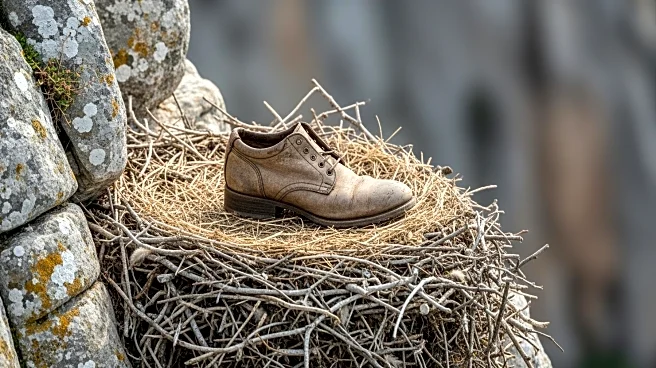What's Happening?
Researchers have uncovered artefacts dating back hundreds of years in the nests of bearded vultures in southern Spain. These birds, known for occupying the same nests for extended periods, have inadvertently preserved historical items. The study, conducted between 2008 and 2014, involved dissecting 12 nests layer by layer using archaeological methods. Among the findings were a basketry fragment from the 18th century, sheep leather from approximately 650 years ago, and a sandal believed to be around 674 years old. The research not only provides insights into the diet and nesting habits of the bearded vultures but also offers a glimpse into human customs in the regions inhabited by these birds. The discovery of plant fibres in the nests, dating back to the Epipaleolithic period, further enriches the understanding of historical human practices and ecosystems.
Why It's Important?
This discovery is significant as it bridges ecological and ethnographic research, offering a unique perspective on historical human practices through the lens of avian behavior. The artefacts found in the nests provide valuable information on the cultural and material history of the regions where bearded vultures reside. Additionally, the research could aid in the conservation efforts for the threatened bearded vulture species in Europe by identifying potential distribution and release sites. Understanding the historical nesting sites and dietary changes over time can inform habitat conservation strategies, potentially improving the survival prospects of these birds. The study highlights the interconnectedness of human and ecological histories, emphasizing the importance of preserving natural habitats that serve as repositories of historical data.
What's Next?
Future research on other nests could further illuminate changes in diet and nesting site selection over time, as well as human customs in areas inhabited by bearded vultures. This could lead to more comprehensive ecological and biocultural studies, enhancing conservation efforts. Researchers may prioritize habitat conservation based on the findings, potentially influencing policy decisions regarding wildlife protection. The study opens avenues for interdisciplinary research, combining archaeology, ecology, and ethnography to better understand the historical interactions between humans and wildlife.
Beyond the Headlines
The discovery of historical artefacts in bird nests underscores the importance of interdisciplinary approaches in scientific research. It highlights how ecological studies can contribute to understanding human history and cultural practices. The findings may prompt further exploration into how other species contribute to preserving historical artefacts, offering new insights into the relationship between wildlife and human societies. This research could inspire similar studies in different regions, potentially uncovering more about the historical interactions between humans and nature.











